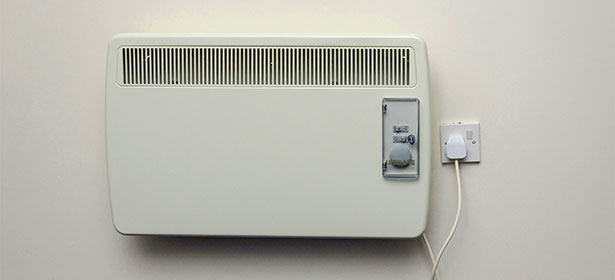
Storage heaters can be an ingenious way to heat your home using the cheapest electricity, but for many of us the way they work is a complete mystery. We’ve set out to unravel the how they work, how much electricity they use, and how we can get the most out of them.
Storage heater tariffs
Before you understand how much electricity a storage heat uses, you need to understand when and why it uses it that way. It ain’t a plug and play heater that you buy for a tenner from Argos, it’s a smart piece of kit that requires you to understand it.
Storage heaters are such a pretty smart invention because they exploit a fundamental problem with energy generation (and UK energy generation in particular) and they use it to their advantage.
When you think of energy generation, you might think of coal, or nuclear, or wind. These are three prime examples of the problem. None of these methods of energy generation can be turned off; the coal plants need to operate all night to be efficient, the nuclear reactor doesn’t turn off, and the wind doesn’t stop blowing. Which is fine, until we’re all asleep, using very little energy, and these power plants are still pumping power out.
We don’t have the battery storage capable of handling all this energy, so it’s a case of trying to convince people to use it when it’s being generated – at night. This is why dual rate tariffs exists, often called Economy 7 or Economy 10 tariffs. Instead of offering a fixed rate, they let us use energy cheaply during off peak hours and then charge us more during the day.
Storage heaters are therefore designed to store up as much energy during the cheap night hours, for us to use when we need it. If you’re not on a dual rate tariff, your storage heaters are not achieving this, and are probably costing you an absolute fortune.
Storage heater running costs
Assuming that you only use it charging on your lower rate tariff, a 2kw high performance storage heater would have a running cost of around 13p per hour.
Storage heater usage
The thing about this system is that it requires you to take a bit of an educated guess on how much warmth you’re going to require the following day. If it’s been cold all week but you suddenly get a warm day, your storage heater may well have been on all night, storing up (and using up) energy that you’re never going to use!

Heat loss
Although the actual number varies between systems and the buildings they operate in, more storage heaters will have lost the majority of their heat after about 12 hours of standing. That means that if you’re getting home from work at 7-8pm, you might be disappointed in how little is left to warm you up.
In this instance, you might find yourself throwing caution to the wind and turning the heater up, despite it requiring the use of the much more expensive electricity. This means that, if the storage heater doesn’t suit your lifestyle, you could end up using a whole lot more electricity than you expect and paying a whole lot more for it.
Why you shouldn’t buy a new storage heater
Even if the storage heater seems like a good option for you, we think it’s not.
Remember at the start of this article where we discussed those energy generation technologies that allow dual tariffs to exist? 2 out of 3 of those are coming to a close in the UK. Britain is aiming to be coal free by 2025, while many of our biggest nuclear plants are reaching the end of their life.
That means that the dual tariff days are numbered. We suggest you take a look at your other options for heating without gas.
Think we missed something? Do you have a different opinion?
Comment below to get your voice heard…












Have all the subsidies for new storage heaters finished?
So Negative, you have campaigned for years without engaging your brain. Before banning something that makes life more comfortable for society, spend a little of your manic mentality on devising alternatives.
Not a bad article in some respects but have you REALLY seen how the new Dimplex Quantum storage heaters actually work. I think not! We have just installed 2 Quantums, and they have improved our cottage heating almost unbelievably well. We also have air to air heat pump heating, but although it is very efficient (ours are about 3 to 1, although I believe that the new ones can be as good as 4 to1) the control systems provided with our pumps are very primitive compared to the Dimplex Quantums. On the other hand some foreign panel heaters that we bought are OK but the computer controlled operating programs are unbelievably complicated, and in spite of being computer literate, I think that they are miles too complicated for the average user to get anywhere near successful use. We are thinking of just throwing them away they are so unnecessarily complicated. So your article was rather pessimistic and slightly uninformed, but keep trying, it could be so much better!
We have had electric storage heaters for forty years. By far our biggest problem has been the attitude of other people to them, an attitude based entirely on ignorance.
Hi, I have storage heaters and they are costing me a fortune!
Me too, our night usage with 4 out of our potential 6 heaters running = annual consumption night rate 10,800kw. Electric bill was £1500 for Jan / Feb 23. Love my storage heaters but they’ve got to go.
Me too, I absolutely love them but Jan / Feb 23 bill £1500, cost of running 4 heaters. Turned kitchen one off (3kw?) and saved a fortune on next bill. Turned the others off early in the season, now £1600 in credit.
costing me a fortune too!. one storage heater in the front room is using up to over £80 per month!!
storage heaters are a total ripoff,the electricity companies charge you a different higher rate for your normal electricity so you pay more for your normal appliances,and the ones I had used so much night rate electric that I might as well have just started a fire using bank notes it would have been cheaper :))
So, do they use (and cost) electricity during the night AND during the day?
No but if you have a duel rate tariff, your night rate is cheaper but your day rate is dearer it virtually levels out if you have a 70/30 day/night rate split usage
The main problems with storage heaters are that the Government green scheme is forcing thousands of housing association tenants to have these heaters when they are not suitable for them and that the energy companys are ripping them off for normal electricity use. These heaters are very complicated to use and there is no training on how to use them supplied. Everybody that i know that has had these heaters fitted cannot afford to run them, so they are not been used. The Government scheme is forcing thousands of households to go without heating. Storage heaters are an energy company scam and the UK Government should be ashamed of themselves.
I have two night storage heaters and not been advised how to use them my bill is tremendous l am trying to get in tough with Scottish gas it’s impossible l am disabled and get very stressed am l suppose to leave them on day and night l have no idea
One of the best places to look for what is the most efficient portable heater is on the Internet. By doing this you will be able to quickly compare a variety of different models. You will also be able to read customer reviews to see what other people think about certain models.
Hi I am having solar panels put in which are 4.62kw which is costing 4.5k. A smart meter being installed as we have a 2 tariff meter at the moment. The cost of replacement is £157 this must be done by your energy supplier. I am also installing 20amp timer switches on the night storage heaters so I faze each of them on and off starting with the down stairs down heat rises so I don’t consume from the grid only from my solar panels. This will also coincide with the hot water Emerson heater which will come on later in the day so it’s hot when I come home. I have also had a 15l hot water tank put in under the kitchen sink which cost around 140 pounds plus fitting
so we don’t leave hot water in pipes. It’s worth thinking outside the box so we use as much energy as we can from the panels. This is especially true during the winter months.
By having panels fitted at approximately 120 degrees so southeast you will get the maximum solar generation during the winter when you need energy the most.
I hope this helps.
Any advice would be helpful
What you have failed to mention is that if you don’t have the new High Heat retention storage heaters you will score low in you EPC and if the new government proposals come into effect if you your property is rated below a C….you will not be able to rent your property and it may be difficult to sell your property. Everyone know the EPC is not fit for purpose and a government scam where someone is creaming the money in and probably has shares in these companies. Why would anyone change from Gas to completely Renewable Electricity when to government penalize you.
The wind doesn’t stop blowing? It can go down to negligible at times for a few days.
Sounds good BUT the energy companies WILL be phasing in varied unit price tariffs. EG the tariff amount per unit will change during the day. Smart meters will be able to do this . ALSO many units have a water system that heats at night so we get both benefits. on economy 7. The Full facts must be addressed..